About-face for future Warkworth
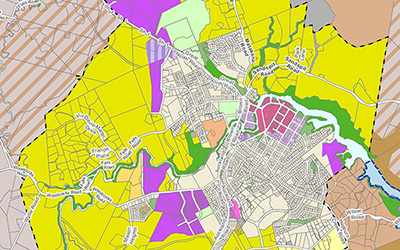
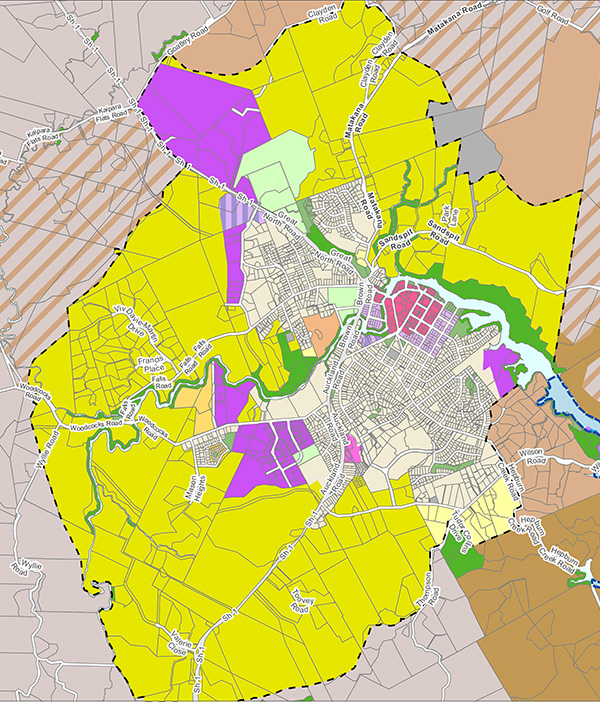
Sins of the Town Fathers: Rather than repeat the sins of Warkworth’s town fathers who, almost without exception, had their buildings face-about-arse to the Mahurangi River, the new Auckland Council-ordained satellite growth centre must, first and foremost, be a river-revering town, like its Northumbrian namesake. Land coloured yellow here is Future Urban Zone, purple is Light Industry Zone, and that with the brown hatching, Mixed Rural Zone. map Auckland Council
Old Warkworth turned its back on the Mahurangi River.
Although an egregious act of disrespect, Warkworth settlers were forward-looking Victorians, wedded to smart coaches and fast trains.
The river had utility, but steamboats were a yesterday’s, Georgian icon. The young town, however, proved to be poorly served by road and rail:
Consequently, the town that had so eagerly turned its back on the river was condemned to rely upon it, and the rival steamboat companies that plied it. The locally prolonged steamboat era only ended for the Mahurangi in 1937, following the belated arrival of an all-weather road to Auckland.
In 2010, 156 years after its founding, Warkworth was summarily declared a satellite growth centre, by the bosses of the newly amalgamated Auckland region. Those who had been trusting Auckland’s inaugural mayor to uphold his party’s opposition to the then only proposed Pūhoi–Warkworth motorway—the justification for the satellite growth centre designation—were to be disappointed. But so was the self-disgraced one-term Labour Party mayor Len Brown, whose cosying up to the National’s fossil-fuel-era roads-of-national-significance doctrine had failed to buy him immediate government support for his urban rail aspirations.
So, as with many of the decisions taken during the brutal forging of Auckland Council from one regional, three district, and four city councils, when it was decided to supersize Warkworth, democracy didn’t get a look-in. Be that as it may, Warkworth was never going to escape the pressure for development that has pushed the average house prices in the region to nearly double the national average. But while the growth rate set for Warkworth is double that planned for the balance of the wildly growing region, this also provides a powerful argument for particularly thoughtful planning—planning for lifestyles of the future rather than the present, fossil-fuelled era.
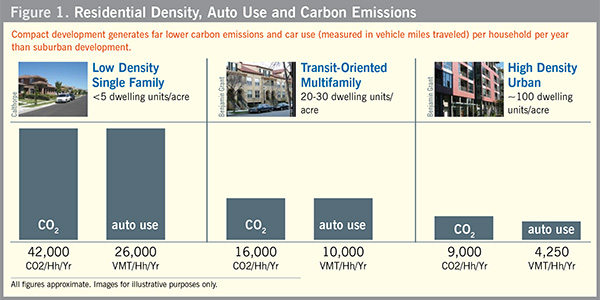
What Could Be Worse: As if suburban sprawl isn’t already sufficiently costly, hanging it off the end of a motorway nearly sixty kilometres from the city centre would make it a climate monstrosity. A walkable Warkworth, however, would greatly mitigate its contribution to global warming. image SPUR – San Francisco Bay Area Planning and Urban Research Association
There has been a deliberate and cynical erosion of belief that communities, cities or even countries should plan for the future. Forward planning is rubbished as an exercise in futility because the future is too unpredictable. Best leave it to the market, people and their councils are told, by interests that have much to profit by ensuring that they are the only ones planning——their future riches. Forecasting and planning is not prediction, and it is the democratic right of citizens to be involved in shaping their communities.
Mahurangi Action has decided to put its oar into the planning of what will essentially be an entirely new town of 20 000 people. It is doing so, not because it believes it has a mandate for every Mahurangi issue, but because it has a 43-year record of care and concern for the Mahurangi River, and the river is the natural and proper starting point for imagining this brave new Mahurangi town. Many towns have a river running through them, and often those towns, like Warkworth, were established at their river’s tidehead. Few, however, are lucky enough to have a river with an indigenous forest backdrop, and an iconic industrial monument—the Wilson Cement Works—just one nautical mile downstream.
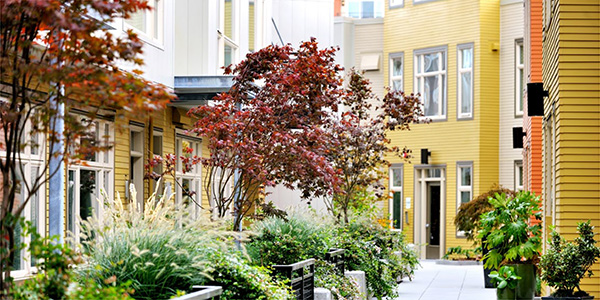
Build it and the Walkers Will Come to Warkworth: If the objective of decreeing that Warkworth be a satellite growth centre is to accommodate people, then that goal is better met by creating places for people, rather than for cars, which are grotesquely energy inefficient compared to walking, cycling and public transport. Build it for cars, and more cars will come to clog the streets of the riverside town. image SPUR – the San Francisco Bay Area Planning and Urban Research Association
The organisation has determined that its most useful early contribution to a community-led planning process is to commission a professional open spaces study from Morphum Environmental and White Landscape and Urbanism, which share offices in Warkworth and the former of which is providing geometric design services for the Mahurangi Coastal Trail, pro bono. While a significant component of the open spaces study will be provided pro bono, there’s a limit to how much unpaid work the professionals involved can do in their own time, or that their astoundingly supportive employers can otherwise cover.
Second only in importance to the river, is Warkworth’s position as the hub of a rapidly developing network of paths and trails stretching from Pakiri to Pūhoi and Waiwera. The economic benefits, of what should properly be termed the Tamahunga Trails, will mostly accrue to that region’s towns. This will be in the form of visitors, some of which will be inspired to stay for days while exploring, on foot or on bicycle, more and more of the great Tamahunga trail network.
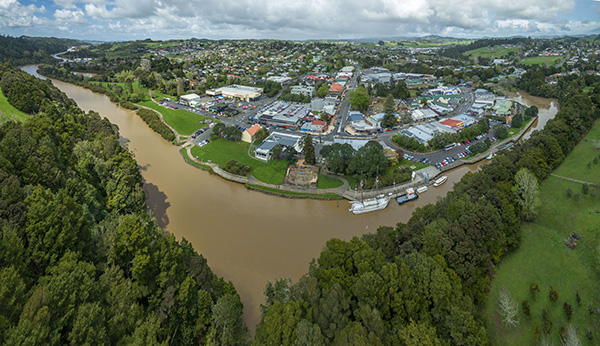
A River View: Forty-three years of caring for the Mahurangi River earns Mahurangi Action the responsibility to put its oar in, in respect to planning the open space, paths and cycleways that, first and foremost, need to pay homage to the town’s dominant, glorious geographic feature. aerial image Ian Macdonald
As the network’s hub, the new Warkworth needs to be the epitome of walkable and cyclable. Retrofitting the old Warkworth will be challenging, but by designing the path and cycleway connections at the same time as the open spaces will ensure the new Warkworth is walkable, right out of the box. It will be a unique experience for visitors, and will recruit new residents who place a premium on living a post-fossil-fuel-era lifestyle—where buying a property, rather than subsidising yet another car-centric development belonging to the past, is investing in the walkable community of the future. It is not a task for the fainthearted, as spelled out in the Getting to Great Places report on San Jose’s future:
Mahurangi, by daring to be different, would boast the most talked about and visited town in Aotearoa.
A world-class example to the rest of the region, and to all New Zealanders.

Why don’t we go for a name change to WALKWORTH—worthwhile!—as a coat hanger for the project. I’m sure this has occurred to others as well.
Or just Walk Warkworth—even better.